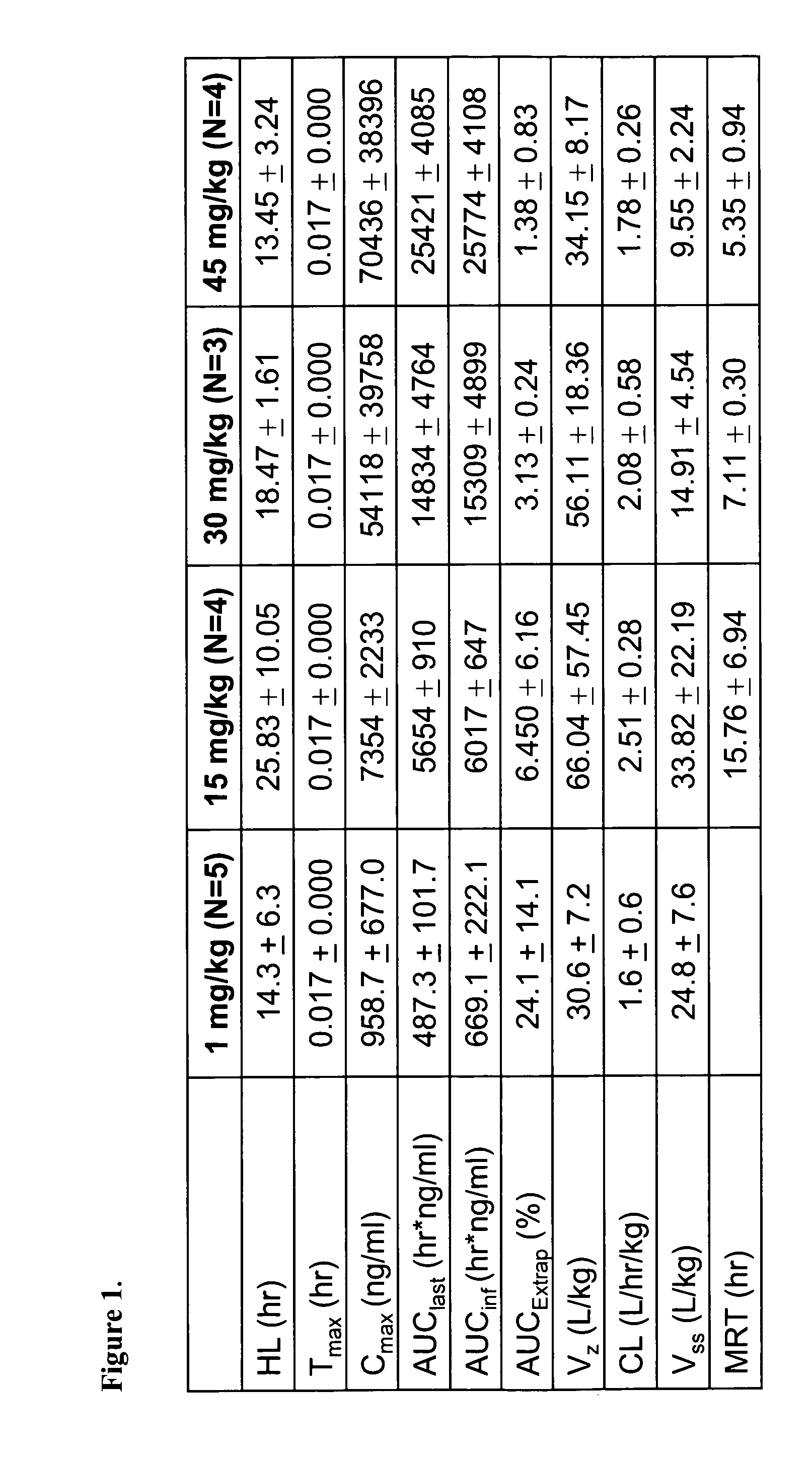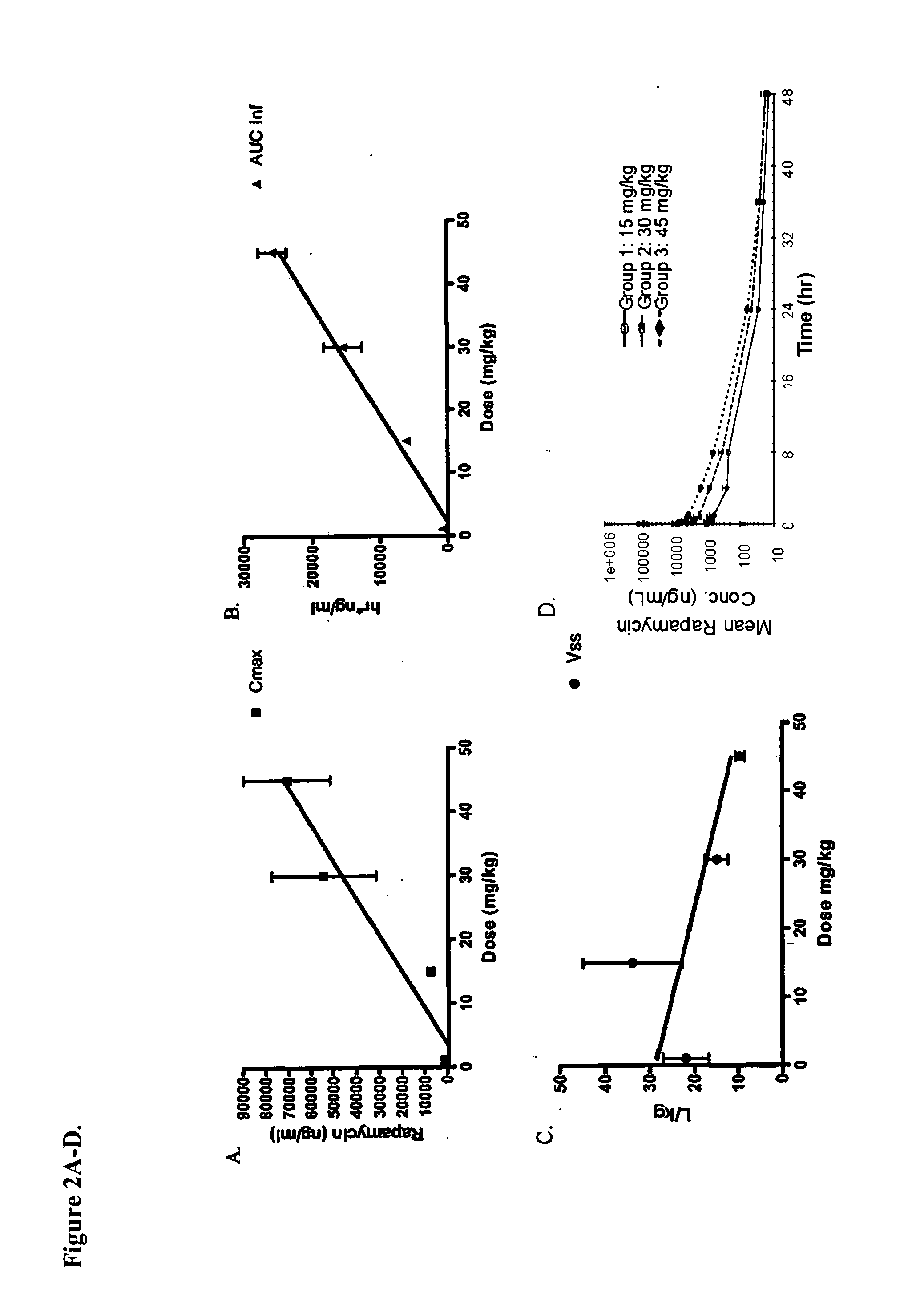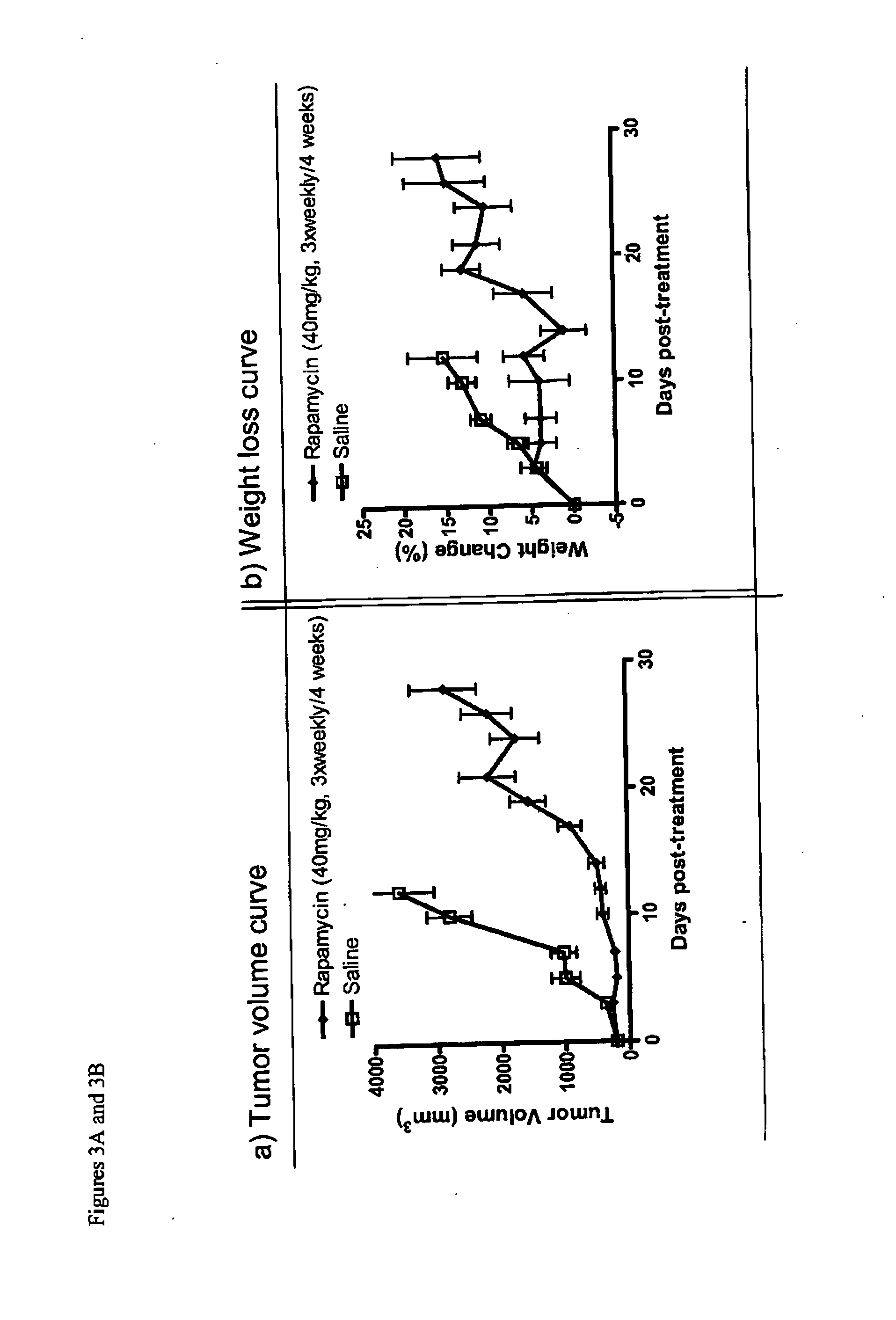Nanoparticle comprising rapamycin and albumin as anticancer agent
a technology of nanoparticles and tumors, which is applied in the direction of biocide, drug compositions, therapy, etc., can solve the problems of inaccessibility to surgeons, inability to treat tumors located in other areas, and inability to respond to significant numbers of tumors to drugs and/or radiation therapy, etc., to achieve the effect of preventing or retarding the development of tumors
- Summary
- Abstract
- Description
- Claims
- Application Information
AI Technical Summary
Problems solved by technology
Method used
Image
Examples
example 3
Inhibition of Breast Cancer Cells Using Nab-Rapamycin
[0148]The antitumor activity of Nab-rapamycin was examined using a human mammary carcinoma xenograft in mice. MX-1 tumors were implanted subcutaneously into both the right and left flanks of female athymic mice (4-5 per group) and allowed to grow to 100 mm3. The mice were then intravenously administered either saline or Nab-rapamycin at a dose level of 40 mg / kg with a three times weekly schedule for 4 weeks. The dosing volume was 2 ml / kg. Tumor growth data were analyzed by ANOVA.
[0149]Nab-rapamycin was highly effective against breast cancer, achieving a tumor growth inhibition of 88% against the MX-1 xenograft (p<0.0001 versus control, ANOVA; FIG. 3A). No significant weight loss was observed in the mice from Nab-rapamycin at 40 mg / kg (FIG. 3B). Thus, Nab-rapamycin was well tolerated even at the highest dose of 180 mg / kg with a q4dx3 schedule, showed linear pharmacokinetics, and was highly effective against a breast cancer model in...
example 4
Use of Human Clinical Trials to Determine the Ability of Compositions of the Invention to Treat, Stabilize, Prevent, and / or Delay Cancer
[0151]If desired, any of the compositions described herein can also be tested in humans to determine the ability of the compositions to treat, stabilize, prevent and / or delay cancer (e.g., breast cancer). Standard methods can be used for these clinical trials. administering to the patient population an effective amount of at least one other chemotherapeutic agent. The at least one other chemotherapeutic agent may be administered concurrently or sequentially with rapamycin or a derivative thereof nanoparticles. In some embodiments, the at least one other chemotherapeutic agent comprises 5-Fluoruracil, Epirubicin and Cyclophosphamide (FEC) administered concurrently or sequentially. These methods may have higher efficacy in ER(−) / PgR(−) populations in all patient populations, both HER-2 positive and HER-2 negative.
[0152]In some embodiments of any of th...
example 1
Exemplary Methods for the Formation of Nanoparticle Compositions with Rapamycin and Albumin
PUM
| Property | Measurement | Unit |
|---|---|---|
| diameter | aaaaa | aaaaa |
| diameter | aaaaa | aaaaa |
| temperature | aaaaa | aaaaa |
Abstract
Description
Claims
Application Information
 Login to View More
Login to View More - R&D
- Intellectual Property
- Life Sciences
- Materials
- Tech Scout
- Unparalleled Data Quality
- Higher Quality Content
- 60% Fewer Hallucinations
Browse by: Latest US Patents, China's latest patents, Technical Efficacy Thesaurus, Application Domain, Technology Topic, Popular Technical Reports.
© 2025 PatSnap. All rights reserved.Legal|Privacy policy|Modern Slavery Act Transparency Statement|Sitemap|About US| Contact US: help@patsnap.com



